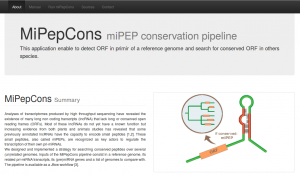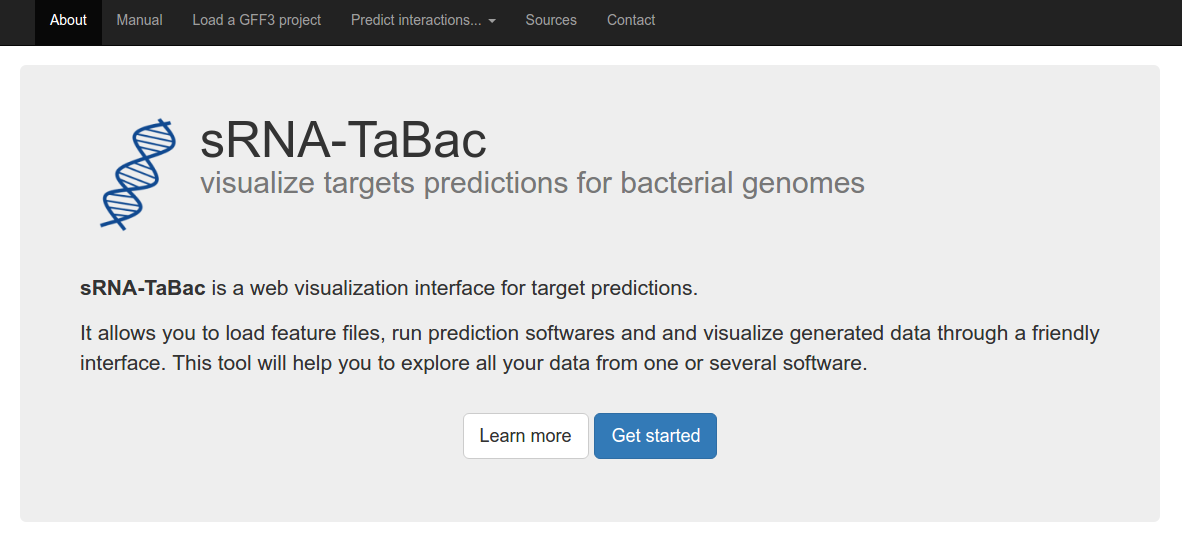miPepCons
 Description: Analyses of transcriptomes produced by high throughput sequencing have revealed the existence of many long non coding transcripts (lncRNA) that lack long or conserved open reading frames (ORFs). Most of these lncRNAs do not yet have a known function but increasing evidence from both plants and animals studies has revealed that some previously annotated lncRNAs have the capacity to encode small peptides [doi 10.1166/jpsp.2017.1070]. These small peptides, also called miPEPs, are recognized as key actors to regulate the transcription of their own pri-miRNAs. We designed and implemented a strategy for searching conserved peptides over several (un)related genomes.
Description: Analyses of transcriptomes produced by high throughput sequencing have revealed the existence of many long non coding transcripts (lncRNA) that lack long or conserved open reading frames (ORFs). Most of these lncRNAs do not yet have a known function but increasing evidence from both plants and animals studies has revealed that some previously annotated lncRNAs have the capacity to encode small peptides [doi 10.1166/jpsp.2017.1070]. These small peptides, also called miPEPs, are recognized as key actors to regulate the transcription of their own pri-miRNAs. We designed and implemented a strategy for searching conserved peptides over several (un)related genomes.
Availability: soon.
sRNA-TaBac
 Description: sRNA-TaBac is a web visualization interface for target predictions. It allows you to load our data and visualize them througt a friendly interface. It is a tool to help you to explore all your data from one or several software. Key features: i) load easily our data: input format GFF3 like (see Data Format), ii) give our reference genome, iii) fold our actors and see interaction on it, iv) convert data into alignment-like format (see Alignment-like Format), v) save our table result into CSV, vi) implementation of several filters.
Description: sRNA-TaBac is a web visualization interface for target predictions. It allows you to load our data and visualize them througt a friendly interface. It is a tool to help you to explore all your data from one or several software. Key features: i) load easily our data: input format GFF3 like (see Data Format), ii) give our reference genome, iii) fold our actors and see interaction on it, iv) convert data into alignment-like format (see Alignment-like Format), v) save our table result into CSV, vi) implementation of several filters.
Availability: sRNA-TaBac is not yet available.
PyroCleaner
Description: The pyrocleaner is intended to clean the reads included in the sff file in order to ease the assembly process. It enables filtering sequences on different criteria such as length, complexity, number of undetermined bases which has been proven to correlate with poor quality and multiple copy reads. It also enables to clean paired-ends sff files and generates on one side a sff with the validated paired-ends and on the other the sequences which can be used as shotgun reads.
Availability: The PyroCleaner code is freely available on GitLab.
Publication: Mariette J, Noirot C, Klopp C. Assessment of replicate bias in 454 pyrosequencing and a multi-purpose read-filtering tool. BMC Research Notes 2011, 4:149. see
